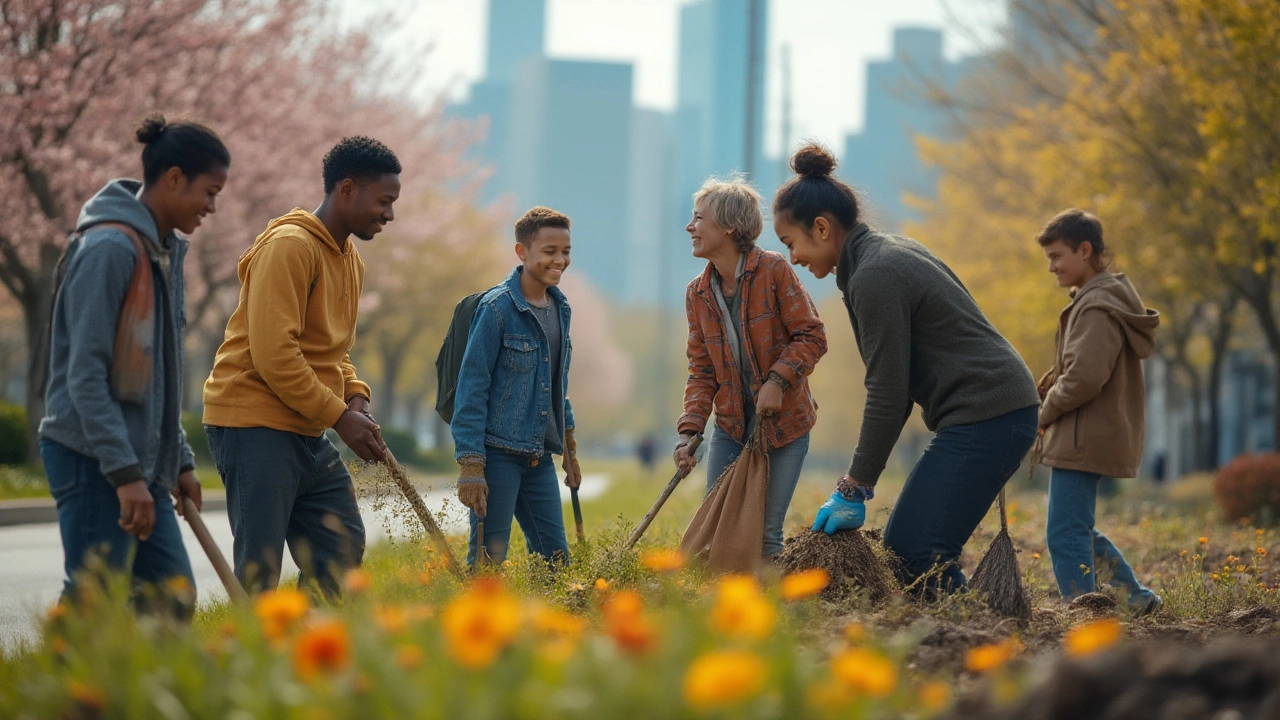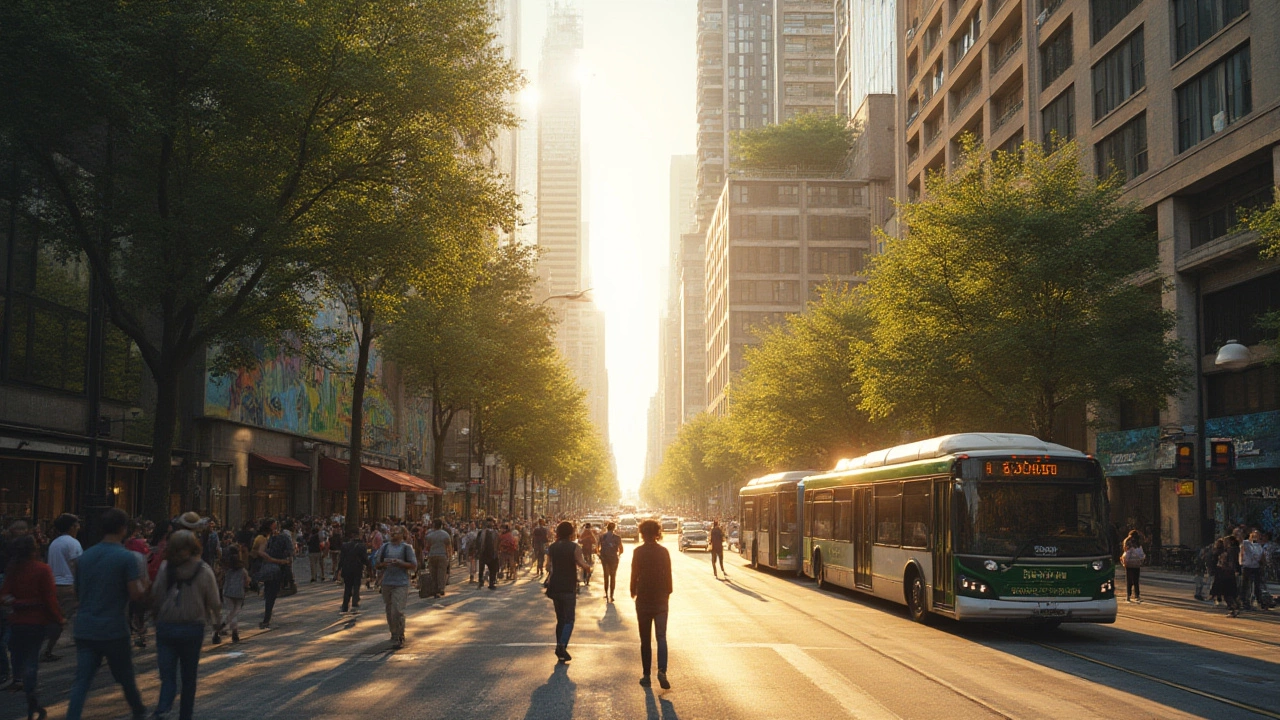It’s wild how quickly a place can go from gritty to gleaming. You know the feeling—walking through a city where you can see the mountains in the distance, breathe deep without getting a whiff of car exhaust, and not sidestep litter every few steps. With so many cities duking it out for the crown of the cleanest city in the US, there’s bound to be drama, pride, and maybe even a bit of jealousy from the rest of us stuck in hazy skylines. Let’s pull back the curtain and get real about what makes a city not just look clean but feel clean all the way down to the bones.
The Real Heavyweight: What Does "Cleanest City" Mean?
It’s easy to fluff up rankings with tourist snapshots or city-approved press releases, but clean goes way beyond freshly scrubbed sidewalks. We’re talking air that doesn’t leave your lungs coughing up questions, water you’d actually let splash your face, and an unspoken promise that garbage belongs in bins—never scattered behind food trucks or swirling down alleys. Here’s the deal: most experts use the American Lung Association’s State of the Air Report, EPA water quality grades, waste management reports, even basic trash collection stats to size up our cities. Some cities have even flaunted their green belts and public transportation systems as proof they’re going the extra mile for a tidy future.
So, what truly counts? For most, the trifecta includes:
- Consistently clean air (think low ozone and particle pollution)
- Safe, well-managed water supplies
- Low litter, visible recycling, and strong waste management
- Accessible parks and public green spaces
- Bike paths and public transit that actually get used
- Engaged locals and active city cleaning crews—because let’s face it, nobody loves a slacker neighbor messing it up for everyone
Here’s a table that gives a quick peek at a few defining features for cities that usually top the charts.
| City | Ozone Pollution Grade (ALA, 2024) | Water Quality Score (EPA, 2024) | Parks Per Capita | Annual Avg. Days w/o Litter Violations |
|---|---|---|---|---|
| Honolulu, HI | A | 97/100 | 2 per 1000 people | 320 |
| Portland, OR | A- | 95/100 | 4 per 1000 people | 290 |
| San Diego, CA | B+ | 96/100 | 3 per 1000 people | 275 |
| Burlington, VT | A | 99/100 | 5 per 1000 people | 310 |
Right away you see Honolulu, Portland, San Diego, and Burlington keep popping up. But who’s on top?
The Winners: Cities Where "Clean" Is a Lifestyle
Honolulu stands out like a well-rested surfer at sunrise. The air quality here is absurdly good—thanks, tradewinds! The American Lung Association almost always gives the city an A grade. On top of that, the water quality’s fantastic, which makes sense for a place where beaches matter as much as coffee.
Burlington, Vermont, might be smaller, but it punches far above its weight. The city runs almost entirely on renewable energy, keeps its tap water crisp and clean, and has locals so serious about recycling, you’ll spot them inspecting bins at farmers markets like amateur detectives. Green space? You bet—easy access wherever you turn. Burlington banned plastic bags and offers compost bins citywide. It’s not just a vibe; it’s a relentless pursuit.
Portland grabs loads of attention, too. Not only does it boast some of the best parks per person stats in America, but it’s got free public composting, a “leave no trace” mindset, and bike lanes that make other cities jealous. The thing about Portland is, you feel the pressure to be a good neighbor. No one’s tossing trash from their Subaru—they know they’ll get the stare.
Then there’s San Diego—a beach city that keeps sand, surf, and main streets sparkling. Strict anti-litter campaigns, a strong recycling game, and endless beach cleanups make tourists wonder if locals are born with trash pickers in hand. The city also fought for green building initiatives that force developers to get serious about pollution control.
So, who wins? According to the most recent combination of EPA data and the American Lung Association’s rankings, Honolulu lands at the top. No surprise for anyone who’s ever breezed through town after the rain. But Burlington deserves applause for its eco-passion, and Portland and San Diego for relentless practical effort.

What’s the Secret Sauce? How Clean Cities Stay on Top
Honolulu’s secret? It’s got nature on its side—ocean breezes keep smog at bay, and rainfall sweeps away a lot of nastiness before it settles. But there’s much more to it. The city pours real cash and effort into shoreline protection, penalizes polluters, and runs robust education campaigns teaching locals and visitors not to leave a trace.
Burlington’s trick is its people. Civic pride isn’t just a slogan—it’s the backbone of policy, from renewable energy to curbside composting. Peer pressure works wonders; no one wants to be “that guy” who skips out on recycling night.
Portland’s playbook starts with accessibility: most neighborhoods are walkable, bikeable, and sprinkled with green spaces. The city pushes hard for greener public transit, and businesses hustle to stay on board (compost bins practically outnumber trash cans downtown). People bring reusable everything or risk social exile. Seriously.
San Diego’s city council set up big fines for illegal dumping, but it also rewards eco-friendly businesses and rewards schools that go waste-free. Beach patrols and annual cleaning contests make environmental care a source of local pride and not just the job of a few volunteers.
What do all these cities have in common? They:
- Keep rules strict—nobody ignores recycling regulations or bans on foam containers.
- Make it easy—public trash and recycling bins stand on every block, never hidden.
- Celebrate wins—cities give awards to businesses and folks making a difference.
- Get kids involved—schools teach everything from waste sorting to water conservation as early as kindergarten.
- Support low-emission travel—bike rentals everywhere, bus lanes, even car-share perks.
Here’s a hot tip—if you want to know how clean a city is, peek behind big events (like marathons or festivals) and see what’s left the morning after. In the cleanest cities, you might not find so much as a stray coffee cup.
Tips for Travelers: How to Experience (and Keep) a City Clean
Want to enjoy the cleanest cities America has to offer? It’s easier than you might think to join the club. Here’s what you can do—not just to benefit from the effort, but to leave things better for the next guy.
- Carry your own reusable bag, water bottle, and cutlery. Locals in clean cities aren’t shy about calling out single-use waste.
- Stick to the marked trails and beaches. Cities invest time and money so you can enjoy nature without wrecking it—walk softly.
- Get to know local rules—Honolulu and Portland both have rules against feeding wildlife, single-use plastics, and smoking in parks. Break them and you might end up with a fine (or, worse, a local lecture).
- Support businesses with green certifications. Many clean cities hand out stickers and badges for zero-waste outlets. Follow the lead.
- Jump into a cleanup event—most cities have beach or park cleanups weekly, and it’s a fun way to meet new people.
- Use public transport, rent a bike, or hop on their e-scooters. Every clean ride keeps city air a little clearer.
- If you spot trash, pick it up—even a little helps. Locals in places like Burlington do this naturally, and it rubs off fast.
If you’re hunting for travel ideas or a new place to call home, start with places that top the "cleanest city in the US" lists. You're likely to notice the difference before you even get your suitcase zipped up—and hey, the locals will thank you with cleaner streets, friendlier parks, and air that actually smells like rain, not regret. Who knows, stick around long enough, and you might even bring a few of these clean habits back home.
